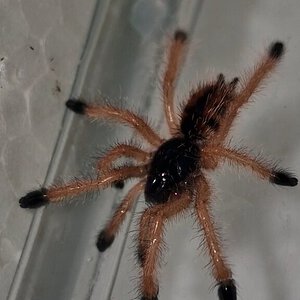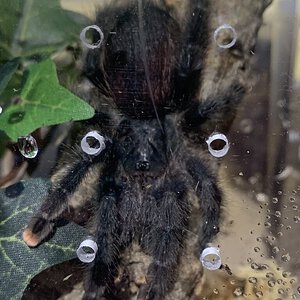KodiakWavingBear
Arachnopeon
- Joined
- Apr 24, 2024
- Messages
- 4
Hey all! I am a new keeper with an A. avicularia as my first T. She's about 2 inches or a bit bigger. It's been 10 days since I have had it(unsexed) and I've fed it twice (small to just about medium superworms). I wanted to ask a question about feeding. I've seen online that a lot of people do feeding schedules like once a week or a big meal every 2 weeks or a month, but after doing some searching on this forum people advise to stay away from scheduled feedings and feed based on abdomen. My question is how do I feed "based on their abdomen"? Does that mean, when I notice the abdomen becomes smaller than the carapace I feed, or do I have to maintain a certain size? How do I know if the abdomen is big enough to where I should avoid feeding it and when it gets small enough to feed it? I try to use my sisters T for reference but she has an A. chalcodes and their abdomens are way more plumped than Avics (at least from what I've seen in videos) and shes a lot bigger too. Thanks!
Attachments
-
422.1 KB Views: 14
Last edited:




